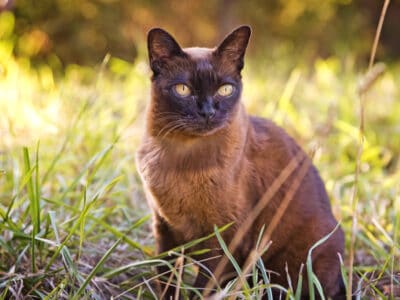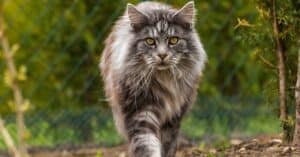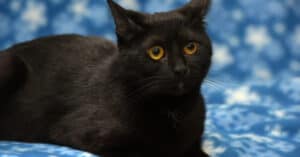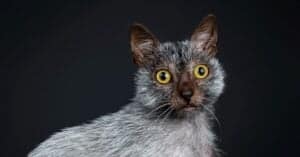Cat Teeth: Everything You Need To Know
Cats have long been our feline friends and are one of the most popular pets, along with dogs. Although they are often friendly and playful they are also well known for their regal and aloof attitude. Cats are able hunters and it’s not unusual for them to bring us a “present” as proof of their ability. But what about those super-sharp teeth that they use? What is so special about them? Join us as we discover everything you could ever want to know about cats teeth.
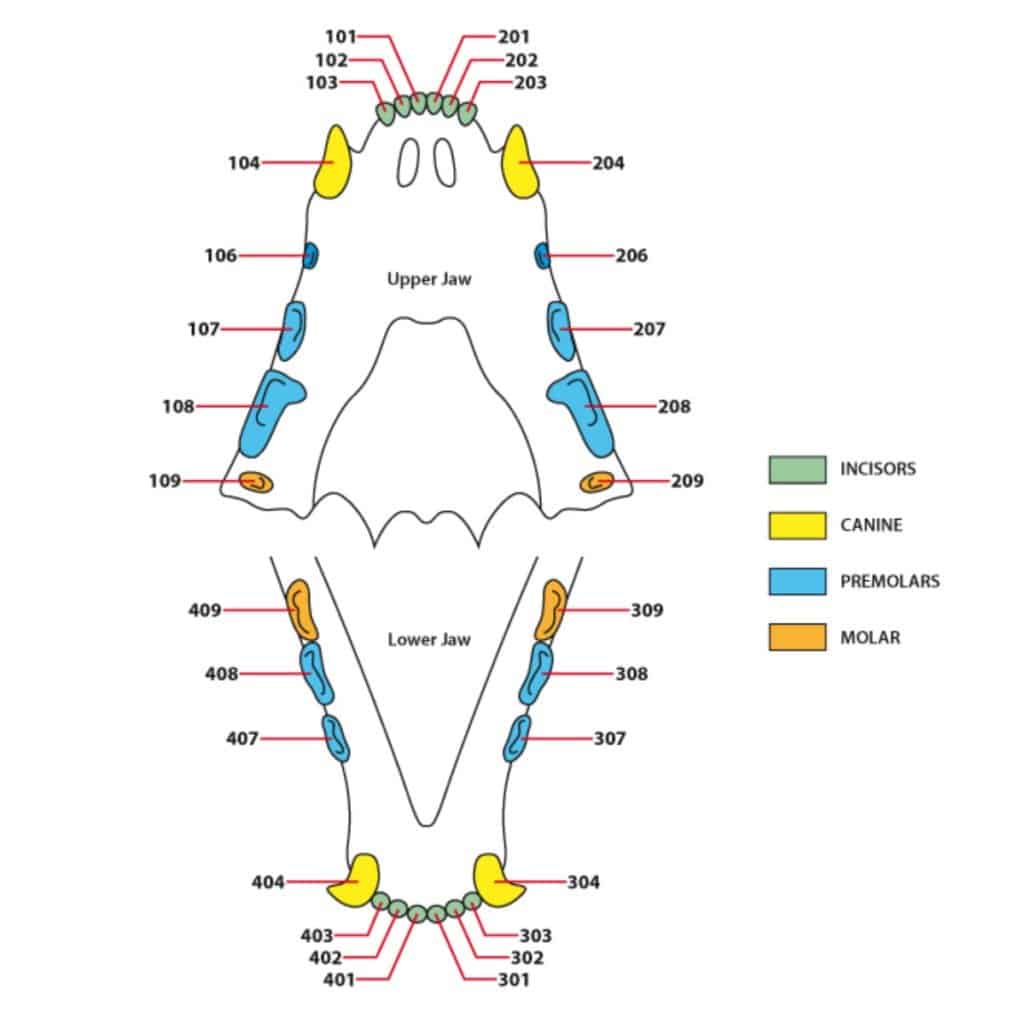
Rainer Lesniewski/Shutterstock.com
Cat Milk Teeth
Cats, just like dog teeth, have two sets of teeth in their lifetime and their first set is known as milk or deciduous teeth. Cats have 26 milk teeth, although they don’t begin to erupt until around 3 weeks of age. The first milk teeth to come through are usually the incisors – 6 upper and 6 lower. The rest of their milk teeth are usually fully erupted by the time the cat is 6 weeks of age. As well as twelve incisors, kittens have four canine teeth and ten premolars. They don’t have molars until their adult teeth come through.
As with many animals, cats go through a period of teething when their teeth are erupting. Although kittens are born without teeth their milk teeth come through pretty quickly. However, underneath their milk teeth their adult teeth are developing in the jaw, and at this point they’re known as “tooth buds”. The adult teeth begin to grow up through the jaw and eventually push out the milk teeth. During this teething process kittens usually chew a lot on toys or anything else they can get their mouth around to try to relieve the discomfort that they’re feeling in their mouths. They also often drool quite a lot during the teething process.
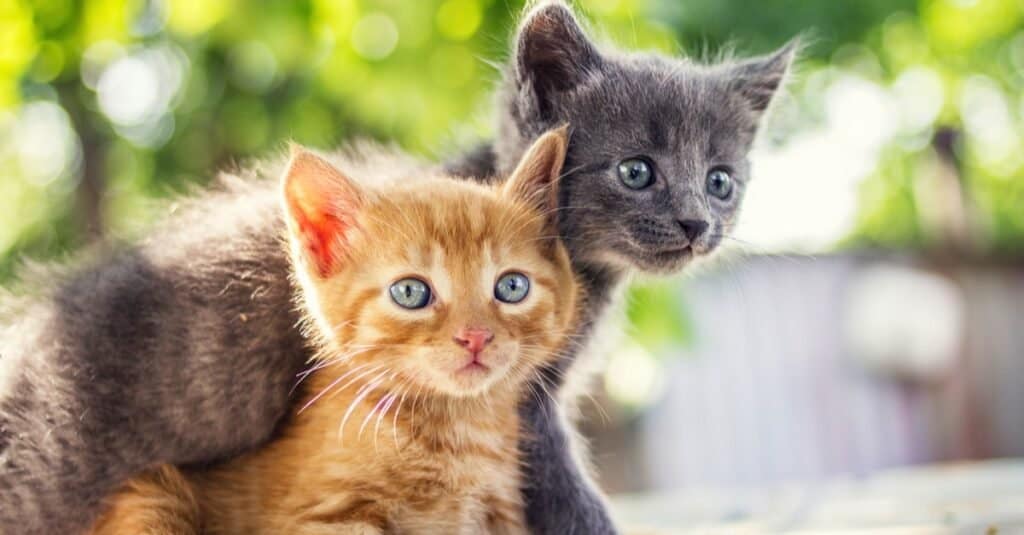
CebotariN/Shutterstock.com
Cat Adult Teeth
As we’ve already mentioned, cats are extremely capable hunters and their teeth are an essential tool that they use for catching and killing their prey. Each tooth has a unique function and they help cats to be really effective hunters. Not only that, but their teeth are incredibly important for cats to remain healthy by breaking their food down into smaller pieces that are easier to swallow.
All cats have 30 adult teeth and these begin to erupt from around 11 weeks of age. Usually most cats have their complete set of adult teeth by the time they are 6 or 7 months old. Cats have four types of adult teeth which all have a different job.
Incisors
Just like their milk teeth, cats have 12 adult incisor teeth – 6 in the bottom jaw and 6 in the upper jaw. They are the small teeth right at the front of the cats mouth and they are amongst the first adult teeth to erupt. Incisors are used for gripping prey with. They are also the teeth that cats use when they are grooming themselves. Cat use their incisors to pull dirt and debris out of their coat with. They also use them to remove parasites such as fleas and ticks – usually by nibbling at themselves with them.
Canines
Canine teeth are the sharp, pointy looking teeth that look like fangs. Cats have four canine teeth – one upper and one lower canine on each side. Canine teeth erupt at around 5 months of age and are used for tearing food into smaller pieces. They are also the teeth that cats use to deliver a fatal bite to their prey with. Cats generally bite their prey at the back of their neck after stalking it. The powerful bite to the back of the neck usually severs the spinal cord of their prey.
Premolars
Premolars are located behind the canine teeth and they are sharp and serrated. Cats have ten premolars in total – six on their upper jaw and four on their lower jaw. Premolars erupt between 4 and 6 months of age and are used for chewing food with to break it up into smaller pieces.
Molars
Cats don’t have molars as kittens, but they do have them in their adult set of teeth. Molars erupt between 4 and 5 months of age and are also used for chewing. They’re also the the teeth that cats use to crush bone with if they’re eating something that they have caught – such as a bird or a mouse. Cats have four molars – one upper and one lower molar on each side.

iStock.com/Nils Jacobi
Cat Dental Problems
Occasionally cats encounter dental problems, and some can be more serious than others. Persistent teeth is a problem that can sometimes occur and is when the milk tooth continues to sit in the place where the adult tooth needs to be and doesn’t fall out. When this happens the adult tooth is sometimes pushed out of position which can lead to overcrowding or a build up of food and tartar between the teeth. Therefore, persistent teeth generally need to be extracted by a vet to prevent further problems.
Periodontal disease is a common problem in cats and is and infection of the tissue surrounding the teeth. Periodontal disease is caused by inflammation of the gums which is initially caused by a build up of plaque on the teeth. Plaque contains lots of bacteria and can build up quickly and eventually forms hard tartar. Periodontal disease can eventually lead to tooth loss. However, plaque build up can be prevented by regular brushing of the cats teeth using toothpaste specially developed for cats.
More from A-Z Animals
Cats have long been our feline friends and are one of the most popular pets, along with dogs. Although they are often friendly and playful they are also well known for their regal and aloof attitude. Cats are able hunters and it’s not unusual for them to bring us a “present” as proof of their ability. But what about those super-sharp teeth that they use? What is so special about them? Join us as we discover everything you could ever want to know about cats teeth.

Rainer Lesniewski/Shutterstock.com
Cat Milk Teeth
Cats, just like dog teeth, have two sets of teeth in their lifetime and their first set is known as milk or deciduous teeth. Cats have 26 milk teeth, although they don’t begin to erupt until around 3 weeks of age. The first milk teeth to come through are usually the incisors – 6 upper and 6 lower. The rest of their milk teeth are usually fully erupted by the time the cat is 6 weeks of age. As well as twelve incisors, kittens have four canine teeth and ten premolars. They don’t have molars until their adult teeth come through.
As with many animals, cats go through a period of teething when their teeth are erupting. Although kittens are born without teeth their milk teeth come through pretty quickly. However, underneath their milk teeth their adult teeth are developing in the jaw, and at this point they’re known as “tooth buds”. The adult teeth begin to grow up through the jaw and eventually push out the milk teeth. During this teething process kittens usually chew a lot on toys or anything else they can get their mouth around to try to relieve the discomfort that they’re feeling in their mouths. They also often drool quite a lot during the teething process.

CebotariN/Shutterstock.com
Cat Adult Teeth
As we’ve already mentioned, cats are extremely capable hunters and their teeth are an essential tool that they use for catching and killing their prey. Each tooth has a unique function and they help cats to be really effective hunters. Not only that, but their teeth are incredibly important for cats to remain healthy by breaking their food down into smaller pieces that are easier to swallow.
All cats have 30 adult teeth and these begin to erupt from around 11 weeks of age. Usually most cats have their complete set of adult teeth by the time they are 6 or 7 months old. Cats have four types of adult teeth which all have a different job.
Incisors
Just like their milk teeth, cats have 12 adult incisor teeth – 6 in the bottom jaw and 6 in the upper jaw. They are the small teeth right at the front of the cats mouth and they are amongst the first adult teeth to erupt. Incisors are used for gripping prey with. They are also the teeth that cats use when they are grooming themselves. Cat use their incisors to pull dirt and debris out of their coat with. They also use them to remove parasites such as fleas and ticks – usually by nibbling at themselves with them.
Canines
Canine teeth are the sharp, pointy looking teeth that look like fangs. Cats have four canine teeth – one upper and one lower canine on each side. Canine teeth erupt at around 5 months of age and are used for tearing food into smaller pieces. They are also the teeth that cats use to deliver a fatal bite to their prey with. Cats generally bite their prey at the back of their neck after stalking it. The powerful bite to the back of the neck usually severs the spinal cord of their prey.
Premolars
Premolars are located behind the canine teeth and they are sharp and serrated. Cats have ten premolars in total – six on their upper jaw and four on their lower jaw. Premolars erupt between 4 and 6 months of age and are used for chewing food with to break it up into smaller pieces.
Molars
Cats don’t have molars as kittens, but they do have them in their adult set of teeth. Molars erupt between 4 and 5 months of age and are also used for chewing. They’re also the the teeth that cats use to crush bone with if they’re eating something that they have caught – such as a bird or a mouse. Cats have four molars – one upper and one lower molar on each side.

iStock.com/Nils Jacobi
Cat Dental Problems
Occasionally cats encounter dental problems, and some can be more serious than others. Persistent teeth is a problem that can sometimes occur and is when the milk tooth continues to sit in the place where the adult tooth needs to be and doesn’t fall out. When this happens the adult tooth is sometimes pushed out of position which can lead to overcrowding or a build up of food and tartar between the teeth. Therefore, persistent teeth generally need to be extracted by a vet to prevent further problems.
Periodontal disease is a common problem in cats and is and infection of the tissue surrounding the teeth. Periodontal disease is caused by inflammation of the gums which is initially caused by a build up of plaque on the teeth. Plaque contains lots of bacteria and can build up quickly and eventually forms hard tartar. Periodontal disease can eventually lead to tooth loss. However, plaque build up can be prevented by regular brushing of the cats teeth using toothpaste specially developed for cats.


